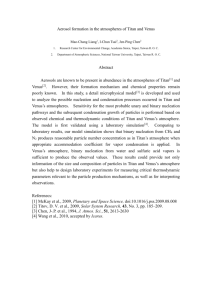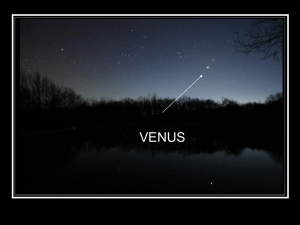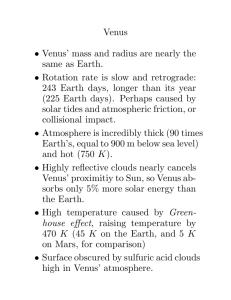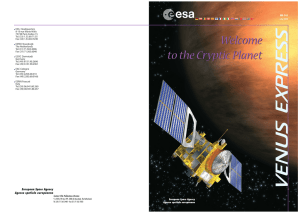Take-home Midterm Exam. Please allow yourself only 3 hours. You... constants (G, charge of electron etc) and physical data (heat...
advertisement
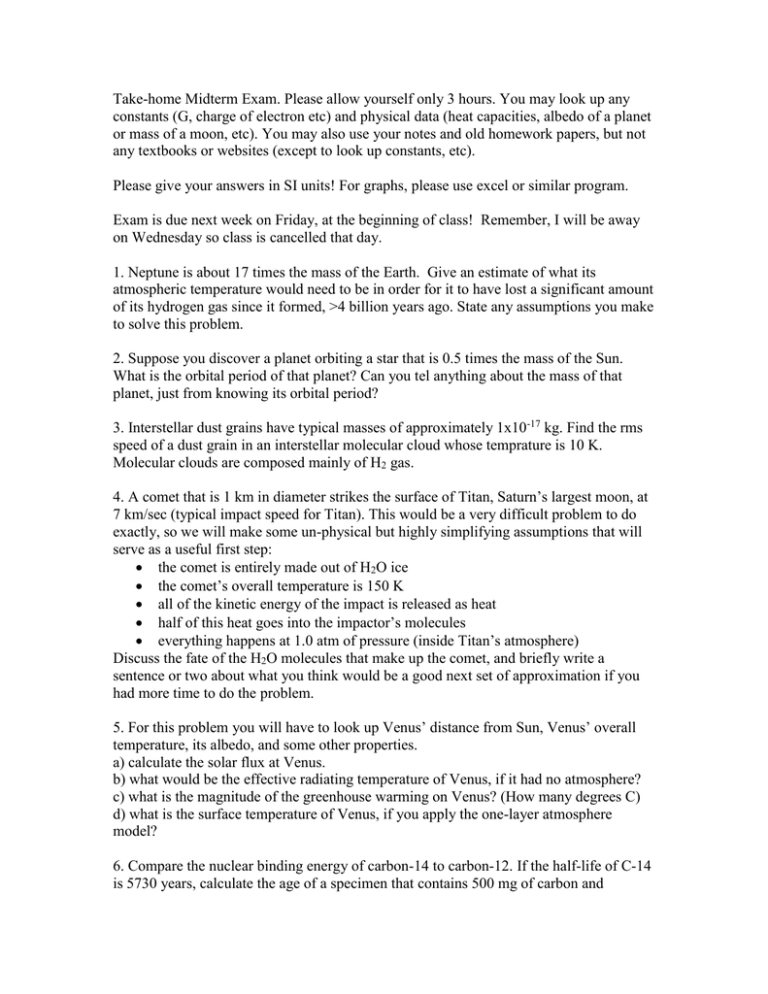
Take-home Midterm Exam. Please allow yourself only 3 hours. You may look up any constants (G, charge of electron etc) and physical data (heat capacities, albedo of a planet or mass of a moon, etc). You may also use your notes and old homework papers, but not any textbooks or websites (except to look up constants, etc). Please give your answers in SI units! For graphs, please use excel or similar program. Exam is due next week on Friday, at the beginning of class! Remember, I will be away on Wednesday so class is cancelled that day. 1. Neptune is about 17 times the mass of the Earth. Give an estimate of what its atmospheric temperature would need to be in order for it to have lost a significant amount of its hydrogen gas since it formed, >4 billion years ago. State any assumptions you make to solve this problem. 2. Suppose you discover a planet orbiting a star that is 0.5 times the mass of the Sun. What is the orbital period of that planet? Can you tel anything about the mass of that planet, just from knowing its orbital period? 3. Interstellar dust grains have typical masses of approximately 1x10-17 kg. Find the rms speed of a dust grain in an interstellar molecular cloud whose temprature is 10 K. Molecular clouds are composed mainly of H2 gas. 4. A comet that is 1 km in diameter strikes the surface of Titan, Saturn’s largest moon, at 7 km/sec (typical impact speed for Titan). This would be a very difficult problem to do exactly, so we will make some un-physical but highly simplifying assumptions that will serve as a useful first step: the comet is entirely made out of H2O ice the comet’s overall temperature is 150 K all of the kinetic energy of the impact is released as heat half of this heat goes into the impactor’s molecules everything happens at 1.0 atm of pressure (inside Titan’s atmosphere) Discuss the fate of the H2O molecules that make up the comet, and briefly write a sentence or two about what you think would be a good next set of approximation if you had more time to do the problem. 5. For this problem you will have to look up Venus’ distance from Sun, Venus’ overall temperature, its albedo, and some other properties. a) calculate the solar flux at Venus. b) what would be the effective radiating temperature of Venus, if it had no atmosphere? c) what is the magnitude of the greenhouse warming on Venus? (How many degrees C) d) what is the surface temperature of Venus, if you apply the one-layer atmosphere model? 6. Compare the nuclear binding energy of carbon-14 to carbon-12. If the half-life of C-14 is 5730 years, calculate the age of a specimen that contains 500 mg of carbon and produces 174 counts/hour when examined with a Geiger counter. 0.255 decays/sec/g carbon in the atmosphere. 1 Ci = 3.70x1010 decays/sec. 7. Given the following data: rate constant (M/sec) temperature (K) 3.52×10–7 3.02×10–5 2.19×10–4 1.16×10–3 3.95×10–2 556 629 666 700 781 make an Arrhenius plot, from which you will find the activation energy of this reaction. Give your answer in kJ/mole.
